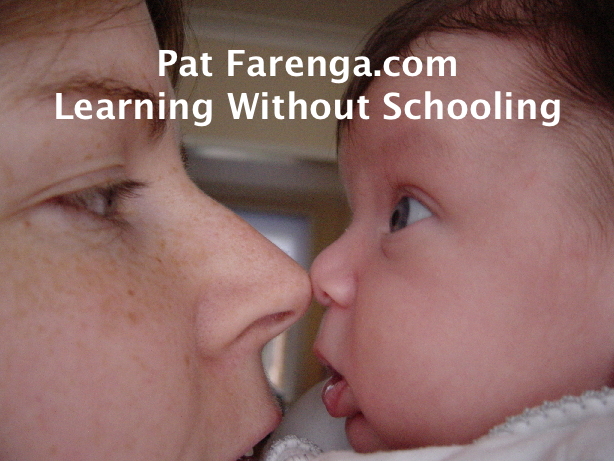Varieties of Unschooling Experience
 Wednesday, June 22, 2011 at 6:03PM
Wednesday, June 22, 2011 at 6:03PM Unschooling is not just for secular, white people with alternative lifestyle demographics. The ideas about learning that John Holt developed over the years speak to people in school and out, to children and adults, to conservatives and liberals; Holt’s work is translated into more than 14 languages now.
However, when we speak about unschooling we are speaking about an idea, not a program, and people need to incorporate ideas into their lives to make them real. Here is an example of what I’m talking about. I recently read A Little Way of Homeschooling: Thirteen Families Discover Catholic Unschooling by Suzie Andres. She writes:
“Unschooling has been the easiest and most comfortable fit for my family. I knew it was right for us, because it was the educational approach that chased away my fear and spoke to me of love. I could really appreciate St. Theresa’s words when she wrote to her older sister in Story of a Soul, ‘No word of reproach touched touched me as much as did one of your caresses. My nature was such that fear made me recoil; with love not only did I advance, I actually flew.’
“Then I heard an echo of her words when I read John Holt. John, like Therese, is articulate, sure, and passionate. He concludes the revised edition of How Children Learn:
‘Little children love the world. That is why they are so good at learning about it. For it is love, not tricks and techniques of thought, that lies at the heart of all true learning. Can we bring ourselves to let children learn and grow through that love?’
“He wrote, too, of fear in education, and how ineffective a tool it was. I thought of my own education and agreed. He wrote of children’s natural love of learning and desire to master the world around them. Again, I knew from experience he was right . . . when I read John Holt I felt the same deep peace I felt when I read St. Therese. Their message to me has been essentially one and the same: Replace fear with trust. Since this is exactly what Jesus taught, I knew it was good advice.”
______________________________________________________________________________
While speaking in Chicago I learned about Finding Joy: A Christian’s Journey to an Unschooled Life by Julie Polanco (it is available from lulu.com). Polanco ends her short book with questions and answers; here’s her reply to a criticism unschoolers often get:
Q: This sounds like all you do is have fun all the time. Life isn’t about having fun. How do kids learn that life is rough?
A: Why shouldn’t life be fun? Why shouldn’t people make money doing something that they find and fulfilling? Sure, all of us experience hardship and tragedy at some point in our lives and our children often experience those things in the course of their lives, too. Their best friends move away or begin to exclude them from the group. The family dog dies. Grandma gets sick and is hospitalized. Dad loses his job. If your children don’t experience any of these things, they will feel the pain through someone they know.
Doing service together often exposes them to the realities of life. When they visit a widow or bring a meal to a new mother, when they make Christmas boxes for Samaritan’s Purse, when they bring new clothers and food to the neighbor whose basement flooded, or when the befriend the immigrant family down the street, they will experience all the ups and downs that life has to offer. Learning should not be among those things that are difficult and unpleasant for children. Learning should be joyous, wonderful, and anticipated with fervor and zest.
 Pat |
Pat |  3 Comments |
3 Comments |  catholic,
catholic,  christian,
christian,  natural learning,
natural learning,  unschooling in
unschooling in  John Holt,
John Holt,  Religion,
Religion,  Unschooling
Unschooling 
